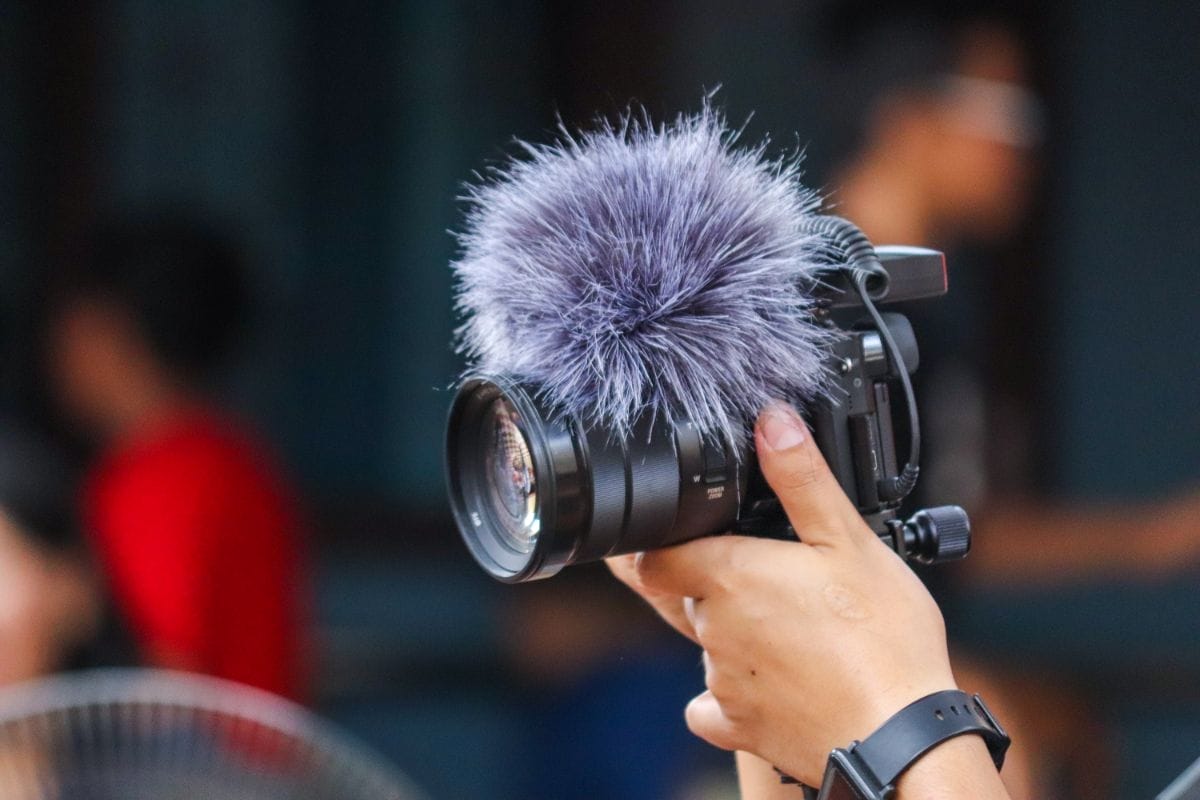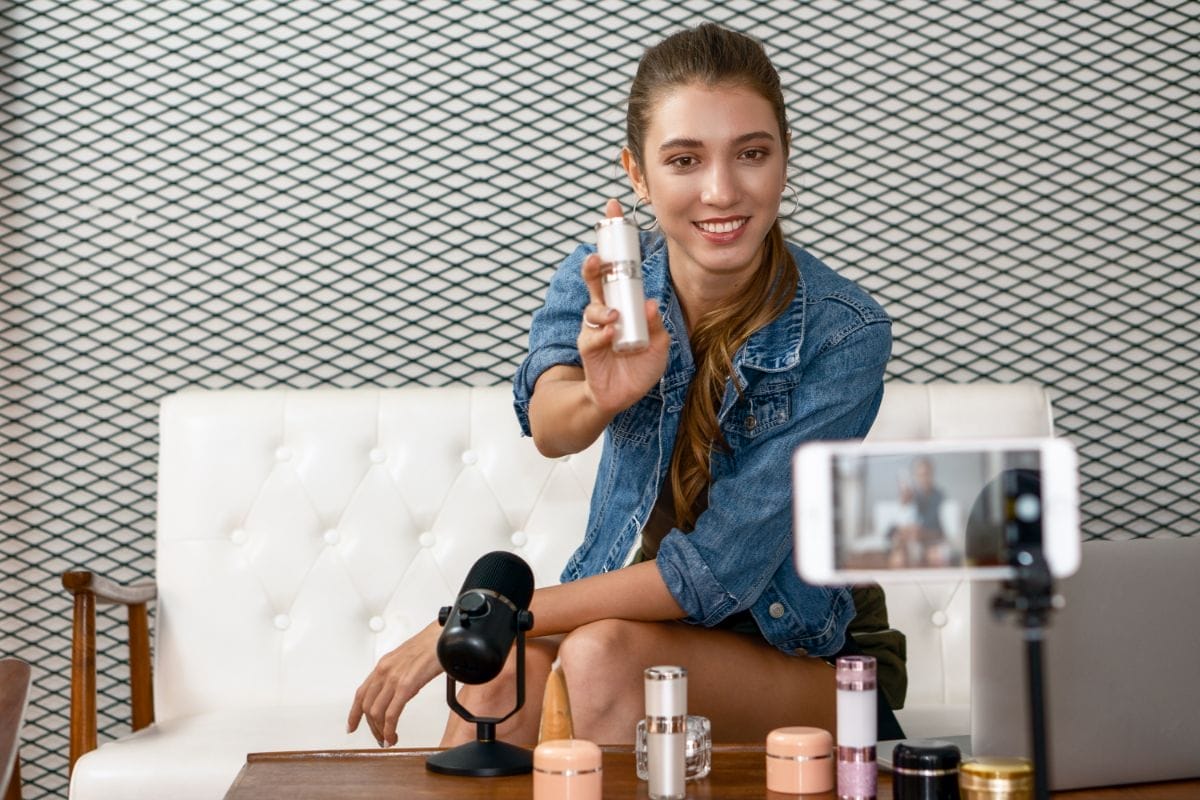YouTube is the largest free video streaming service online today, and it is one of the largest websites in the world.

Literally millions of people use YouTube to not only watch videos endlessly but to create, produce, and show their videos for the entire world to see.
Now, given the numbers involved here, many of you are probably thinking: something doesn’t quite add up here, and you would be right.
If there are millions of video creators on YouTube, each producing a slew of content, then surely some of that content infringes on the copy writ of another content creator’s work?
You would be right, there is a fair bit of content that is being rooted out by the good people of YouTube that does make illegal use of other’s content.
However, this doesn’t apply all too much in one area: Music. Generally, most music that is used in people’s videos is done so with permission and legally.
But how is this so? And where do YouTubers get this free music? In this article, we seek to answer just that.
What Are Copyright Laws?
First, let’s inform you about copyright laws before delving into the deep stuff. Copyright applies to any work or expression made by an individual or group of individuals.
This includes books, movies, songs, software applications, games, etc.
The purpose of these laws is to ensure that the creator of a work receives appropriate compensation when their work is used without them giving explicit permission.
If someone else uses your work without your permission, they could face legal repercussions if they don’t compensate you appropriately (or even worse).
In order to protect our rights as creators, copyright law has a system in place called “intellectual property”.
This means that anything that can be thought of as creative, from paintings to poems, have certain rights attached to them.
These include the right to own the intellectual property, the right to reproduce the work and distribute copies, and the right to publicly display the work.
So basically, you can’t take a painting off a wall in public without the artist’s consent.
The reason you might think that it’s okay to use someone else’s music in your videos is because you’ve never heard of copyright law.
How YouTube Works
In order to understand why YouTubers can use a lot of different music, but not necessarily famous artist’s music, it is necessary to understand how YouTube works.
To do this, we need to know two things first:
- How YouTube’s algorithm works: All websites have algorithms that are basically step-by-step instructions embedded in a computer for them to follow. YouTube’s algorithm is based on what they call the “view count” which is essentially the number of times that a particular video gets viewed. The more views, the higher ranked the video will be. As such, the algorithm is designed to promote popular videos over less popular ones.
- How Google AdSense works: Google owns YouTube and people who want to make money off their YouTube videos use advertisements, with the most popular being Google AdSense. Google AdSense is a program that allows website owners affiliated with Google to insert advertisements in their site.
- It’s pretty simple really: the website owner decides who advertises on his/her website, and how much he/she pays per click. Google takes care of the rest. When a user clicks on an advertisement, Google gives the advertiser a small amount of money as well as the opportunity to advertise again.
Mix copyright laws into this and this system becomes a little toxic.
This is not really the fault of YouTube or Google, but just by the nature of YouTube being absolutely enormous, making the whole system difficult to manage.
Here is an example of this:
A YouTuber uploads a video with some random, but fairly well known piece of music. The video gets popular, like a few million views, and has a few ads on for some revenue.
The artist’s legal team notices their music is being used, the video is flagged under a copyright claim given directly to YouTube and taken down.
With all income being taken from the YouTuber and given to the musician. The video is then re-uploaded without the music.
Now, the problem with this lies in the fact that a lot of music that is used is under fair use.
Fair use means that the music or composition has been changed enough to make the intended purpose of the music or the music itself different enough to warrant its use by the creator of the video, rather than the musician.
This is why rappers can legally use samples as the base for their rap.
Unfortunately, most legal teams or some big artists don’t care about fair use and will flag the video anyway.
Even if it’s found that the video was within its rights to use the music, the money made off ads is never given back to the video creator, giving all the power to the person or artist copyright striking the video.
This does not explain where YouTubers get music for their videos, but it provides the background for where they get it from and most importantly why.
Where Do YouTube Users Get Their Music?

For starters, let’s look at the data that shows exactly how much money YouTube makes off advertising through its platform.
According to YouTube, the company earns $5 billion dollars every quarter. That’s a lot of money. Now, how does YouTube make that money? Well, it’s actually quite simple.
YouTube’s ads are placed in videos across the platform. This means that whenever you watch a video, there’s a good chance that you’ll see an ad for something that YouTube is promoting.
These ads may be sponsored content from brands, or they may be advertisements from other websites. Either way, the goal is to make money off of people watching videos.
So, now you know a bit more about how YouTube operates. Let’s move onto the main question: Where do YouTube users find new music?
Directly From The Artist
Well, as explained above, a major part of YouTube’s revenue comes from the advertising that happens within videos.
This means that one way that YouTube makes money is through the monetization of videos. In fact, this is the largest source of income for YouTube.
As you probably already guessed, the most common method that people use to make money with YouTube is through advertising.
In order to monetize a video, a user must opt in to the ads that are shown within the video. They also have the option to filter out specific types of ads that they don’t want to see.
Now, once the user selects an ad, advertisers pay YouTube a set rate for each time that the ad is displayed. For example, say we create a video that has 10 minutes worth of ads.
Each of those ads provides me $1 per 100 views. Then, if 1000 viewers view the video, I would earn $10. If 1000 viewers view the video, then I’d earn $100. And so forth.
Of course, these numbers aren’t all that accurate, since many factors come into play when determining whether someone watches a video.
However, even though YouTube doesn’t release exact numbers, they estimate that 75% of users have watched at least one commercialized video.
Now, this isn’t just a problem for YouTube. Many other platforms like Facebook, Twitter, Instagram, etc., all rely on advertising in some form or another.
In fact, according to Business Insider, Facebook generates $5 billion dollars annually from advertising alone. This means that the same issues apply to them.
What do we mean by “same issues”? Well, let’s take a look at what happens when a person uploads a song to YouTube with the express permission of the artist who made the song.
The first thing that usually happens is that the video creator will link to where they found the song and the artist.
Next, they will often add tags to their video describing themselves, their relationship to the artist, and the genre of music that they’re sharing.
After that, they will choose either to share the full track or only select parts of the song. Finally, they will add any relevant images to their video.
All of these actions help to build up the popularity of the song and the video on the platform. As a result, songs can become popular quickly through content creators co-operating.
But, before long, people start uploading similar songs and artists begin to notice.
In response, the creators of the original song might start putting in complaints to YouTube or copyright strikes against the people uploading knock off versions of their song.
This method relies on you having your own platform to convince the artist of your work or a close relationship to said artist already and making regular royalty payments to said artist, so it is not for everyone.
Royalty Free Music
The most used method on YouTube and the one least likely to get you in trouble is to use royalty free music.
This is free music available under the creative commons license that is available to be used by anyone and does not require the video creator to make royalty payments for its use.
Nowadays, you have things like YouTube audio library which is free or websites where you can get free music.
But none of them hold a candle to one composer and YouTube would be very different without him: Kevin MacLeod.
Kevin MacLeod is an American composer who has released over 2,000 pieces of royalty free music on his website, with the only stipulation being that you must credit him for using it.
Most music on YouTube, especially in the early days of the platform, is from his archive. Without him, YouTubers would probably have not been able to put music in the background of their videos.
Kevin MacLeod’s website FreePD.com is a website of public domain music and collects public domain music in one place (not just his own compositions) for everyone to be able to use it.
There are other websites of course, like Epidemic Sound or Audiojungle, but the best is definitely FreePD.com.
Make Your Own Music
Another option is to create your own music. Now, there are many ways that you could go about doing this.
For example, you could buy software such as FL Studio and learn how to produce music yourself. Or, you could simply record yourself playing guitar or singing into a microphone.
Either way, you’ll need to know how to play instruments or sing well enough to make something worth listening to.
If you don’t want to spend money on equipment or software, then there are plenty of freeware options out there.
These range from simple programs like Audacity to more advanced ones like Steinberg WaveLab.
However, if you plan to make professional quality music, then you should invest in more expensive software.
For those looking to improve their skill set, I recommend checking out tutorials such as Learn Music Production for beginners at Digital Tutors.
They cover topics including theory, recording techniques, editing, mixing and mastering.
Finally, you can always try creating tracks on GarageBand and see what kind of results you come up with. It may take some trial and error, but it will certainly be fun learning!
Where Can I Learn To Use Music Creation Software?
You can learn how to use software such as FL Studio, GarageBand, etc. through online courses.
Although these courses usually cost money, they offer excellent training materials, and oftentimes include a certificate upon completion.
The best part is that when you finish the course, you’ll be able to apply all the knowledge that you’ve learned to a new project.
A good resource for learning how to use software is Lynda.com, which offers a wide variety of courses ranging from web design to photography to programming.
In fact, you could even find a course on how to use music production software.
How Much Time Does It Take Me To Become Skilled In Music Creation?
It really depends on how motivated you are and how much time you’re willing to dedicate to it. If you’re interested in creating music but lack experience, then the best thing you can do is practice.
Practice makes perfect.
To become proficient in music production, you first need to understand the basics. Once you’ve mastered the basics, you can move onto becoming more advanced.
In order for you to progress in music creation, you’ll have to put in hours and hours of work – so you better be prepared to give yourself an ample amount of free time to devote to the process.
When it comes to learning how to use music creation software, it can take anywhere from 2 weeks to 6 months, depending on how fast you learn.
You might also consider taking a few classes at local colleges, community centers, or music schools.
Conclusion
Most YouTubers often use royalty free music from composers like Kevin MacLeod, determined one’s create their own music to set as the backdrop to their videos.
And the incredibly lucky ones are able to get licenses from famous musicians, either through business deals or personal ties to them.
However, the royalty free music should not be dismissed. For starters, it is easy to get and – even though it is free – its quality is top tier, due to actual composers making it.
If you enjoyed this article, you might enjoy our post on ‘Can I Use Pexels On YouTube?‘.
- Can We Use Envato Elements On Youtube Videos - July 15, 2022
- What’s The Highest Quality Image Format? - July 15, 2022
- Pexels Reviews: Is Pexels Legit? - July 15, 2022








